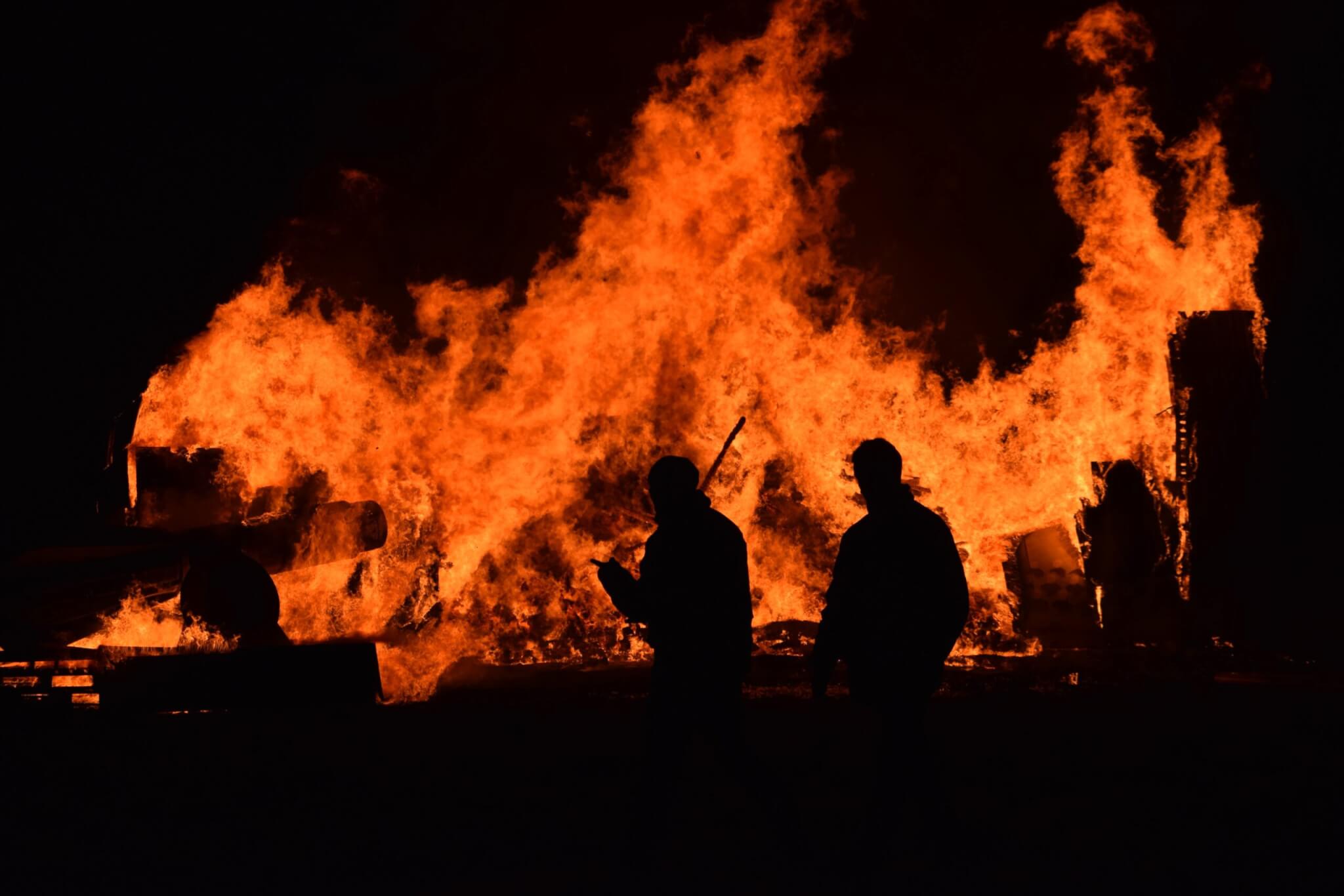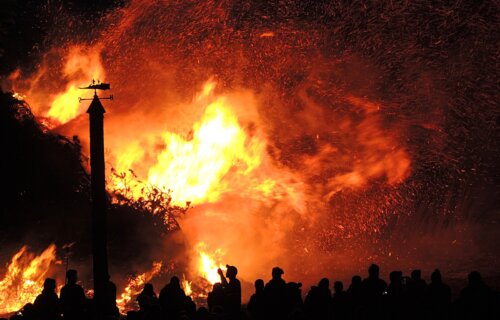For as long as we’ve inhabited the Earth, our existence has been riddled with natural disasters that have shaped our humanity. From volcanic eruptions, hurricanes, wildfires, and more, the worst natural disasters create many of our approaches and responses to natural phenomena. However, if one form of natural disaster sticks out above the rest, that would be wildfires. With the earliest records tracing back thousands of years, the worst wildfires are responsible for innumerable loss of life, the destruction of communities, and long-lasting ecological consequences.
From charring vast landscapes and vegetation, the most severe wildfires have significantly impacted ecosystems, displaced long-rooted Indigenous populations, and accelerated climate change. However, it doesn’t stop there. In a newer study, it was found that breathing in Canadian wildfire smoke could affect your health for years and increase cardiovascular and respiratory mortality. All the same, it hasn’t stopped people from moving to areas prone to wildfires. For example, Californians are still moving to wildfire-prone regions.
Unfortunately, the risks associated with fires don’t stop there. In a recent study, findings revealed that flame retardant chemicals in household goods are harmful to children’s social behavior, from having a unique effect on development to causing an increase in externalizing behaviors such as aggression, defiance, hyperactivity, inattention, and bullying.
Since history has a way of repeating itself, it’s essential to understand how the worst wildfires of all time have impacted our history. For these reasons, we’ve compiled a list of the worst wildfires dating back nearly 200 years ago. Do you know of a worse wildfire? Let us know about it in the comments below.

The List: Worst Wildfires of All Time, According to Experts
1. The Great Fire of 1919
One of the deadliest and worst wildfires of all time is the Great Fire of 1919. Also known as the “Great Fire of Northern Michigan,” this blaze began in October 1919 near the town of Metz. In fact, World Atlas says, “The Great Fire of 1919 burned up five million acres of land in western Canada.” Costing millions in property damages, the “fires were responsible for hundreds of people losing their home” while wood cut for the timber industry contributed to the quick-burning flames.”
In May 1919, exactly 100 years ago, 2.8 million hectares of land were engulfed by flames effecting eastern Alberta and Saskatchewan. They call it the Great Fire of 1919. pic.twitter.com/z2946DRDvq
— Maria E Sharpe (@sharpe_me) May 30, 2019
Following the aftermath of this wildfire, investments in firefighting equipment and early warning alarms were implemented across communities. From improving communication infrastructure, warning protocols, and management practices, the lessons from this wildfire demonstrate the strength of human solidarity. As told by Ranker, “Strong winds fueled this massive wildfire, taking many Canadians by surprise and almost without warning.” To escape the flames, much of “the town fled to the waterfront, dunking themselves.” Despite watching the fire destroy their homes, “they survived to rebuild.”
Sadly, the intensity of the blaze left little time for evacuation. Not only did this lead to increased destruction of property but also the tragic loss of life. As Earth.org writes, “Despite happening more than a century ago, the Great Fire of 1919 is still remembered as one of the largest and most devastating wildfires in history.” Claiming “11 lives and destroying hundreds of buildings,” the Great Fire of 1919 “swept through the boreal forest of the Canadian provinces of Alberta and Saskatchewan.”
2. The Miramichi Fire (1825)
Forever impacting Canadian history, the Miramichi Fire began in October of 1825 and struck the Miramichi region in New Brunswick, Canada. During times when weather conditions were severely dry, this wildfire escalated quickly and engulfed vast areas of settlements and forests. As Tree Hugger reports, “The Miramichi Fire of 1825 was one of the worst forest fires in North American history.” Despite “most of the damage being in New Brunswick” more than “3 million acres had burned and at least 160 people had been killed.”
2/ The Miramichi Fire destroyed 1/3 of the homes in Fredricton and more than a million hectares of forest. This was in 1825. Well before "Climate Change". The same applies to the Saginaw (1870) and Great Porcupine (1911). pic.twitter.com/jnRwIaXbBN
— Erehwonenoon (@dwarrilow2002) October 10, 2021
The Miramichi Fire is believed to be fueled by dry vegetation and strong winds. Creating a wall of fire that extended miles, this wildfire scorched millions of acres of land. Ranker states “the blaze was able to easily expand at a rate of 60 miles per hour towards populated areas and burned approximately three million acres.” After it was said and done, only “12 of the town’s 260 buildings survived” while the “loss of cropland led to instances of famine throughout the province in the weeks following the fire.”
Incurring millions of dollars in damages, this wildfire put the resilience of the people of Miramichi to the test and was felt on an unprecedented scale. By all accounts today, the destructive power of this wildfire serves as a cautionary tale among all who pass through. As Owlcation describes, “entire towns and communities were incinerated by the blaze.” Moreover, the fire “killed between 160 to 3,000 individuals” and given its size, scope, and devastation is “one of the most devastating wildfires in history.”
3. The Peshtigo Fire (1871)
The Peshtigo Fire is one of the most catastrophic wildfires in recorded history. Sparked by a series of small fires and dry weather conditions, this wildfire quickly evolved into a monster inferno. Dial My Calls states, “the Peshtigo Fire is the deadliest recorded fire in all of U.S. history.” It is believed this disaster is “responsible for between 1152 and 2500 deaths” and “burned an area about 150% the size of the state of Rhode Island.”
The Peshtigo Fire in Wisconsin on October 8, 1871, was the most destructive fire in U.S. #history. pic.twitter.com/LMySNN70IX
— HISTORY (@HISTORY) August 25, 2015
Starting as a controlled fire, the Peshtigo Fire grew into an immense firestorm that occurred the same day as the infamous Great Chicago Fire. Consequently, the Peshtigo Fire did not receive nearly as much media attention as the Great Chicago Fire, despite being far more severe. As All Top Everything explains, “the small town in northeastern Wisconsin counted around at least 1,500 deaths which represented around 85% of the town’s population at the time.” And although “Peshtigo received most of the damage,” the fire spread throughout “Wisconsin, Michigan, and Illinois.”
Featuring fire whirls and tornado-like vortices, this wildfire covered approximately 1.5 million acres. Known for razing entire communities into the ground, the Peshtigo Fire serves as a haunting reminder of the raw power of wildfires. As Business Insider writes, “the Peshtigo Fire was the deadliest in U.S. history” and “killed at least 1,152 people” although “some estimates place the death toll closer to 2,500.”
4. The Cloquet Fire (1918)
The Cloquet Fire forever changed the landscape amongst all those who dwelled in the affected area of Minnesota. Reducing entire communities to ashes in a matter of hours, this wildfire is one of the worst in history. Dial My Call explains, “the Cloquet fire is the sixth most deadly fire-related event in U.S. history.” What started as small fires “combined to form one large fire that burned over 250,000 acres of land” and “killed over 450 people.”
#OTD in 1918, a forest fire started from a spark along the rail line between Duluth and Hibbing. Often called the Cloquet Fire, it burned through 38 communities in Minnesota's Arrowhead region over the next three days. Today's #IOTW is a burned-out house: https://t.co/tq2eggJGOs pic.twitter.com/BCfdCX3rny
— MN Digital Library (@MnDigLib) October 10, 2022
In 1918, the Cloquet Fire left a trail of destruction spanning the Minnesota landscape. More than communities and livelihoods were lost across the 1,500 square miles of destruction. Like Love Exploring says, “the fire began on 12 October 1918 then, whipped up by high winds, it spread eastward swallowing some 38 small towns and villages.” By the end, more than “4,000 homes were destroyed” while it “remains the worst natural disaster in the state of Minnesota.”
Despite being over a century ago, the aftermath of the Cloquet Fire serves as a reminder of the destructive forces of nature. In a way, it helped shape how local communities and ecosystems better mitigate the impact of future disasters. “With 453 casualties and around 2,000 people affected, it is also the deadliest disaster in the entire history of Minnesota,” writes All Top Everything. According to reports, “Railroad workers noticed a passenger train that sparked a small fire” which “smoldered for two days before spreading rapidly throughout Carlton Country.”
5. The Great Hinckley Fire (1984)
Like the Cloquet Fire, the Great Hinckley Fire tore through Minnesota terrain rich in timber. Engulfing entire forests and property, this wildfire is among the worst of all time. “Fueled by the flammable material on the forest floor, the wildfire burned 250,000 acres in just four hours,” reports Business Insider. Although the “death toll recorded is 418,” historians believe there are “hundreds of Native Americans that were killed and left out of the fatality count.”
In 09/1884, the Great Hinckley Fire started in MN. Flames reached 200 feet high & fire whirls ignited new fires. Vortices moved w/ great speed, even horses & trains were unable to outrun it. The fire burned 250k acres in just 4 hours & 418 people were killed.#wildfire #history pic.twitter.com/zAvZ0TXOQI
— National Interagency Fire Center (@NIFC_Fire) August 2, 2022
The primary catalysts of the Great Hinckley Fire are strong winds and dry timber. And like other wildfires on our list, this blaze amassed quickly without warning leaving little time to evacuate. As Dial My Calls breaks down, “In 1894, the Great Hinckley Fire broke out near a logging town, catching the discarded bark and branches on the forest floor and spreading quickly.” With an official death toll that is “just a fraction of the true number” and “nearly 250,000 acres of burnt land” the Great Hinckley Fire is one of the worst wildfires of all time.
Prolonged periods of drought and scorching hot temperatures are the origins of the Great Hinckley Fire. Within hours, vast swaths of landscapes were reduced to ash and dust. Like WatchMojo explains, “several small fires ignited in Pine County after a two-month long drought.” And given that much of the land was “covered with branches and harvested trees, the flames spread rapidly.” Interestingly, it is believed that “Thomas ‘Boston’ Corbett, the union soldier who killed President Abraham Lincoln’s assassin John Wilkes Booth, is thought to have died in the blaze.”
You may also be interested in:
Sources:
- Earth
- Ranker
- Owlcation
- World Atlas
- Watch Mojo
- Tree Hugger
- Dial My Calls
- Love Exploring
- Business Insider
- All Top Everything
Note: This article was not paid for nor sponsored. StudyFinds is not connected to nor partnered with any of the brands mentioned and receives no compensation for its recommendations.
